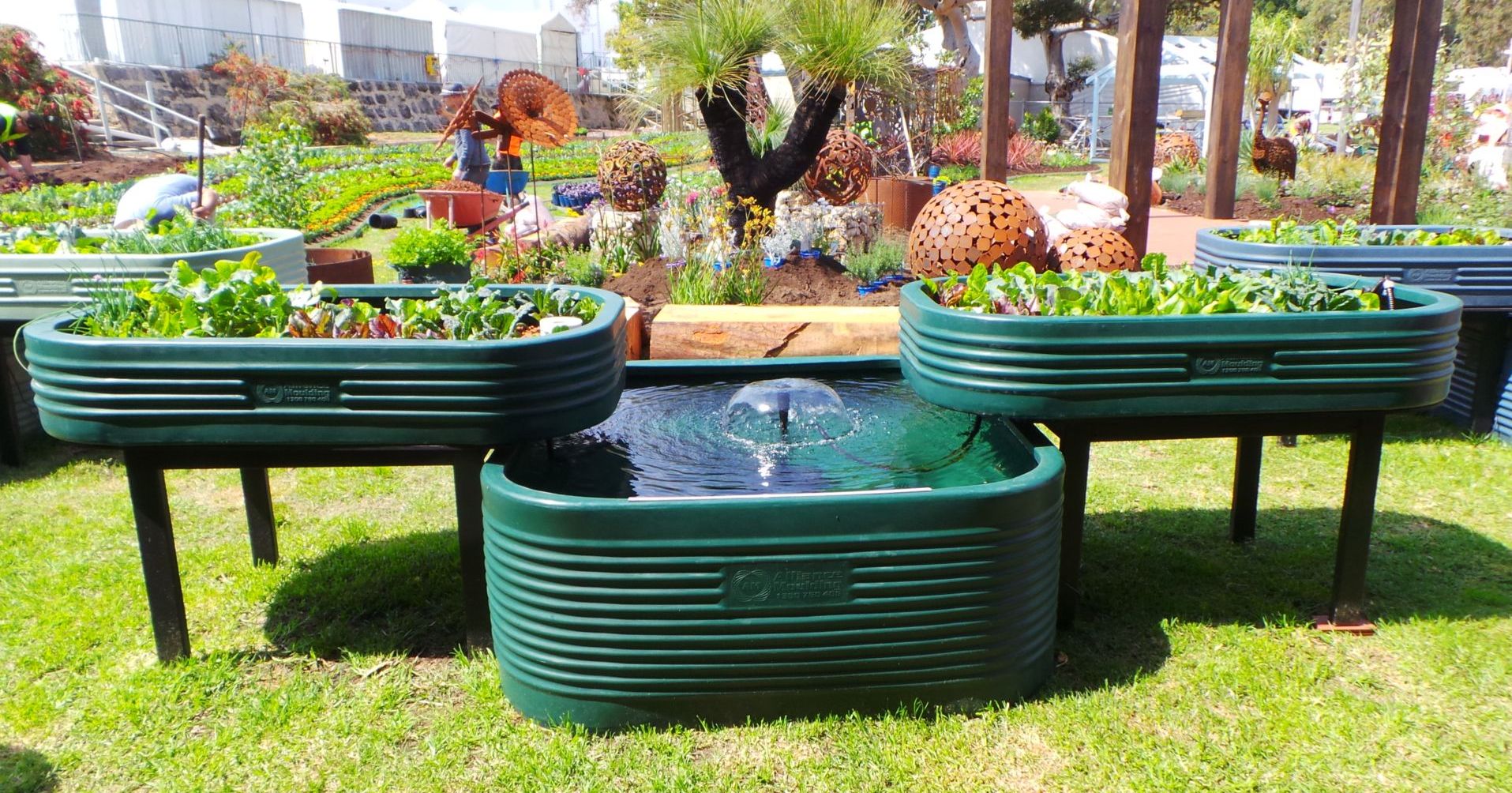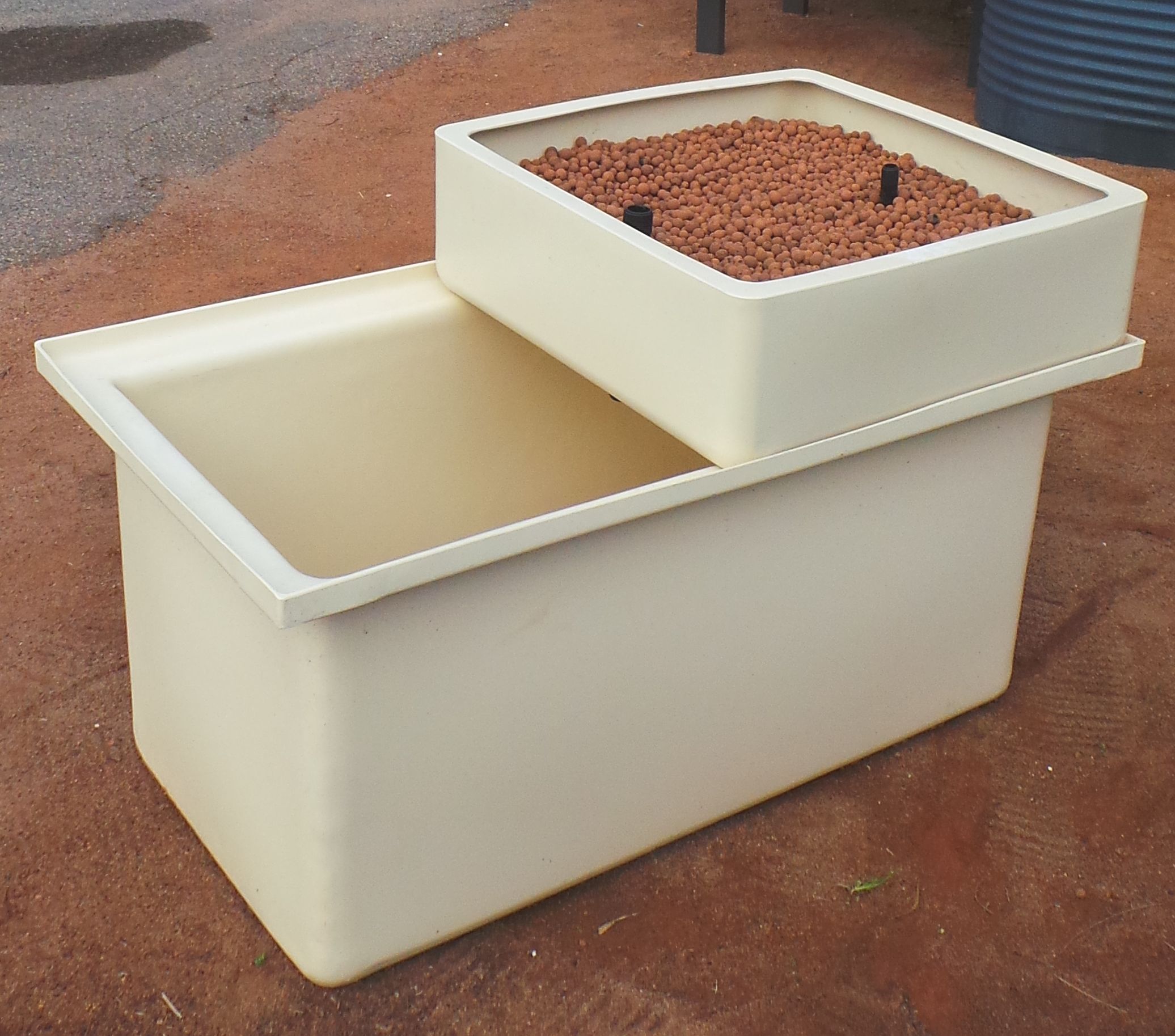Mini aquaponics kits are captivating educational tools that seamlessly blend the worlds of aquaculture and hydroponics, offering a unique opportunity to explore the fascinating realm of sustainable food production. These compact systems provide an immersive and hands-on learning experience, making them ideal for classrooms, homes, and urban environments.
Delve into the captivating world of mini aquaponics kits, where you’ll uncover the secrets of growing your own food while fostering a thriving aquatic ecosystem. This comprehensive guide will equip you with the knowledge and skills to embark on your aquaponics adventure, empowering you to cultivate fresh, healthy produce and nurture a vibrant underwater world.
Introduction
Mini aquaponics kits are compact, self-contained systems that combine fish farming (aquaculture) with plant cultivation (hydroponics). They offer a sustainable and space-efficient way to grow your own food in a small area.
Aquaponics is a mutually beneficial relationship between fish and plants. Fish provide nutrient-rich water for the plants, while the plants help to filter and clean the water for the fish. This closed-loop system eliminates the need for traditional fertilizers and reduces water usage.
Target Audience
Mini aquaponics kits are ideal for people who are interested in:
- Growing their own food in a small space
- Learning about aquaponics
- Reducing their environmental impact
- Eating healthier, more nutrient-rich food
Types of Mini Aquaponics Kits
Mini aquaponics kits come in various types, each with unique components, features, advantages, and disadvantages. Understanding the differences between these types can help you choose the most suitable kit for your needs.
Types of Mini Aquaponics Kits
- Desktop Kits:These compact kits are designed for small spaces, such as apartments or offices. They typically include a small fish tank, a grow bed for plants, and a water pump. Desktop kits are easy to set up and maintain, making them suitable for beginners.
- Wall-Mounted Kits:These kits are mounted on a wall, saving floor space. They come with a vertical grow bed and a fish tank, allowing you to grow plants and raise fish simultaneously. Wall-mounted kits are ideal for homes with limited space or for those who want to add a touch of greenery to their living space.
- Tabletop Kits:Tabletop kits are larger than desktop kits and offer more space for growing plants. They typically include a fish tank, a grow bed, and a water pump. Tabletop kits are suitable for both beginners and experienced aquaponics enthusiasts.
- Greenhouse Kits:Greenhouse kits are designed for outdoor use and provide a controlled environment for growing plants. They include a greenhouse structure, a fish tank, a grow bed, and a water pump. Greenhouse kits allow you to grow plants year-round, regardless of the climate.
Benefits of Using Mini Aquaponics Kits
Mini aquaponics kits offer numerous educational benefits. They provide hands-on learning experiences that teach students about:
- Ecology and ecosystems
- Plant and animal biology
- Water chemistry and nutrient cycling
By observing the interactions between plants and fish in a mini aquaponics system, students gain a deeper understanding of the interconnectedness of living organisms.
Sustainability and Food Security
Mini aquaponics kits promote sustainability by combining food production with water conservation. They allow individuals to grow their own food in small spaces, reducing their reliance on imported produce and promoting local food security. Additionally, mini aquaponics systems require minimal water, making them a sustainable option in water-scarce regions.
Educational Settings
Mini aquaponics kits are increasingly used in educational settings, from elementary schools to universities. They provide a practical and engaging way to teach students about sustainable agriculture and environmental science. For example, students can monitor water quality, adjust nutrient levels, and observe plant growth patterns, gaining hands-on experience in the field.
Design and Setup of Mini Aquaponics Kits

Setting up a mini aquaponics kit is straightforward and can be completed in a few simple steps. By following these steps, you can ensure that your kit is properly configured and ready to support thriving plants and fish.
Tank Size and Water Quality
The size of your tank will depend on the number of plants and fish you plan to keep. A good rule of thumb is to have at least 1 gallon of water for every 1 inch of fish. It is also important to maintain good water quality by regularly testing the pH, ammonia, nitrite, and nitrate levels.
The ideal pH for most aquaponics systems is between 6.5 and 7.5.
Lighting and Aeration
Plants need light to grow, so it is important to provide adequate lighting for your mini aquaponics kit. You can use natural light from a window or supplement it with artificial light. Aeration is also important for providing oxygen to the fish and plants.
You can use an air pump to circulate the water and add oxygen.
Plant and Fish Selection for Mini Aquaponics Kits
Selecting the right plants and fish is crucial for the success of your mini aquaponics kit. Here are some considerations to keep in mind:
Plant and Fish Compatibility
- Choose plants that can tolerate the water conditions created by the fish waste.
- Select fish species that are compatible with the plants you choose.
Nutritional Requirements, Mini aquaponics kit
Consider the nutritional requirements of both plants and fish:
- Plants require essential nutrients like nitrogen, phosphorus, and potassium.
- Fish need a balanced diet that includes protein, carbohydrates, and vitamins.
Maintenance and Troubleshooting of Mini Aquaponics Kits

Maintaining a healthy mini aquaponics kit requires regular monitoring and care. Here are some guidelines to help you keep your kit thriving:
Water Quality and pH Levels
Maintaining optimal water quality is crucial for the health of both plants and fish. Monitor the following parameters:
- pH:Aim for a pH range of 6.5-7.5, which is suitable for most plants and fish.
- Ammonia:Ammonia levels should be kept below 0.25 ppm, as high levels can be toxic to fish.
- Nitrite:Nitrite levels should be below 0.5 ppm, as they can cause oxygen deprivation in fish.
- Nitrate:Nitrate levels should be between 5-20 ppm, as they provide essential nutrients for plants.
Common Problems and Troubleshooting
Here are some common problems you may encounter and how to troubleshoot them:
- Fish Health Issues:Observe your fish for signs of disease, such as lethargy, loss of appetite, or skin lesions. If you notice any issues, consult a veterinarian.
- Plant Growth Problems:If your plants are not thriving, check for nutrient deficiencies or pests. Adjust the nutrient levels or treat for pests accordingly.
- Algae Growth:Algae growth can be controlled by limiting light exposure, reducing nutrient levels, and introducing algae-eating fish or snails.
- Water Leaks:Inspect your kit regularly for any leaks. If you find a leak, repair it promptly to prevent water loss.
Preventing Pests and Diseases
To minimize the risk of pests and diseases, follow these preventive measures:
- Quarantine New Plants:Before adding new plants to your kit, quarantine them for a few weeks to observe for any signs of pests or diseases.
- Inspect Plants Regularly:Regularly inspect your plants for any signs of pests or diseases, and treat them promptly if necessary.
- Keep the Water Clean:Maintain good water quality by regularly testing and adjusting pH levels, ammonia, nitrite, and nitrate levels.
Examples of Mini Aquaponics Kits
Mini aquaponics kits are available in various sizes and designs to suit different needs and preferences. Here are a few examples of popular mini aquaponics kits:
- Back to the Roots Water Garden:This kit includes a 3-gallon fish tank, a grow bed, and a pump. It is a great option for beginners as it is easy to set up and maintain. The kit comes with everything you need to get started, including fish food, plant seeds, and water conditioner.
- iHarvest Aquaponic Garden:This kit includes a 6-gallon fish tank, a grow bed, and a pump. It is a larger option than the Back to the Roots Water Garden and is suitable for growing a wider variety of plants. The kit comes with a built-in filtration system and a grow light, making it a convenient option for indoor gardening.
- DIY Aquaponics Kit:This kit includes all the components you need to build your own mini aquaponics system. It includes a fish tank, a grow bed, a pump, and a variety of other materials. This kit is a great option for those who want to customize their system or who are looking for a more affordable option.
When choosing a mini aquaponics kit, it is important to consider the size of the system, the type of plants you want to grow, and your budget. It is also important to read reviews and compare different kits before making a purchase.
Begin your aquaponics journey with a mini aquaponics kit. Once you’ve mastered the basics, consider expanding your setup by exploring aquaponics greenhouse plans . These comprehensive guides will help you design and build a thriving aquaponics system in a controlled environment.
By integrating fish farming and plant cultivation, you can create a sustainable and productive ecosystem in your own backyard. Return to your mini aquaponics kit and experiment with different plant species to find the best fit for your space and preferences.
Closing Summary
As you embark on your mini aquaponics journey, remember that the rewards extend far beyond the delicious produce you’ll harvest. These systems serve as living laboratories, fostering a deep appreciation for the interconnectedness of nature and the importance of sustainable practices.
Whether you’re a seasoned gardener or a curious novice, mini aquaponics kits offer an enriching and rewarding experience that will inspire you to cultivate a greener, more sustainable future.
FAQ Summary
What is the primary benefit of using mini aquaponics kits?
Mini aquaponics kits provide a hands-on, educational experience that fosters an understanding of sustainable food production and the interconnectedness of aquatic and plant life.
Are mini aquaponics kits suitable for beginners?
Yes, mini aquaponics kits are designed to be accessible and easy to use, making them ideal for beginners who want to explore the world of aquaponics.
What types of plants and fish can be grown in mini aquaponics kits?
Mini aquaponics kits can accommodate a variety of plants, such as leafy greens, herbs, and small fruits, as well as fish species like guppies, bettas, and goldfish.
How much maintenance is required for mini aquaponics kits?
Mini aquaponics kits require regular maintenance, including monitoring water quality, feeding fish, and pruning plants. The frequency of maintenance will vary depending on the size and type of kit.
